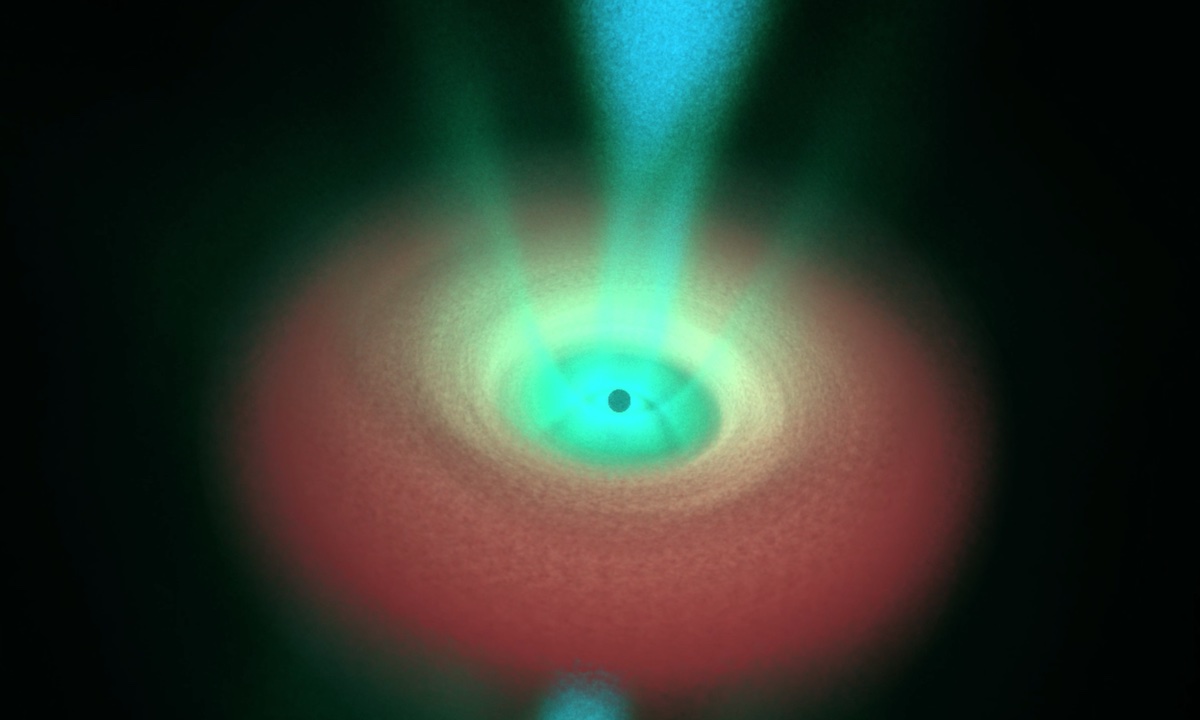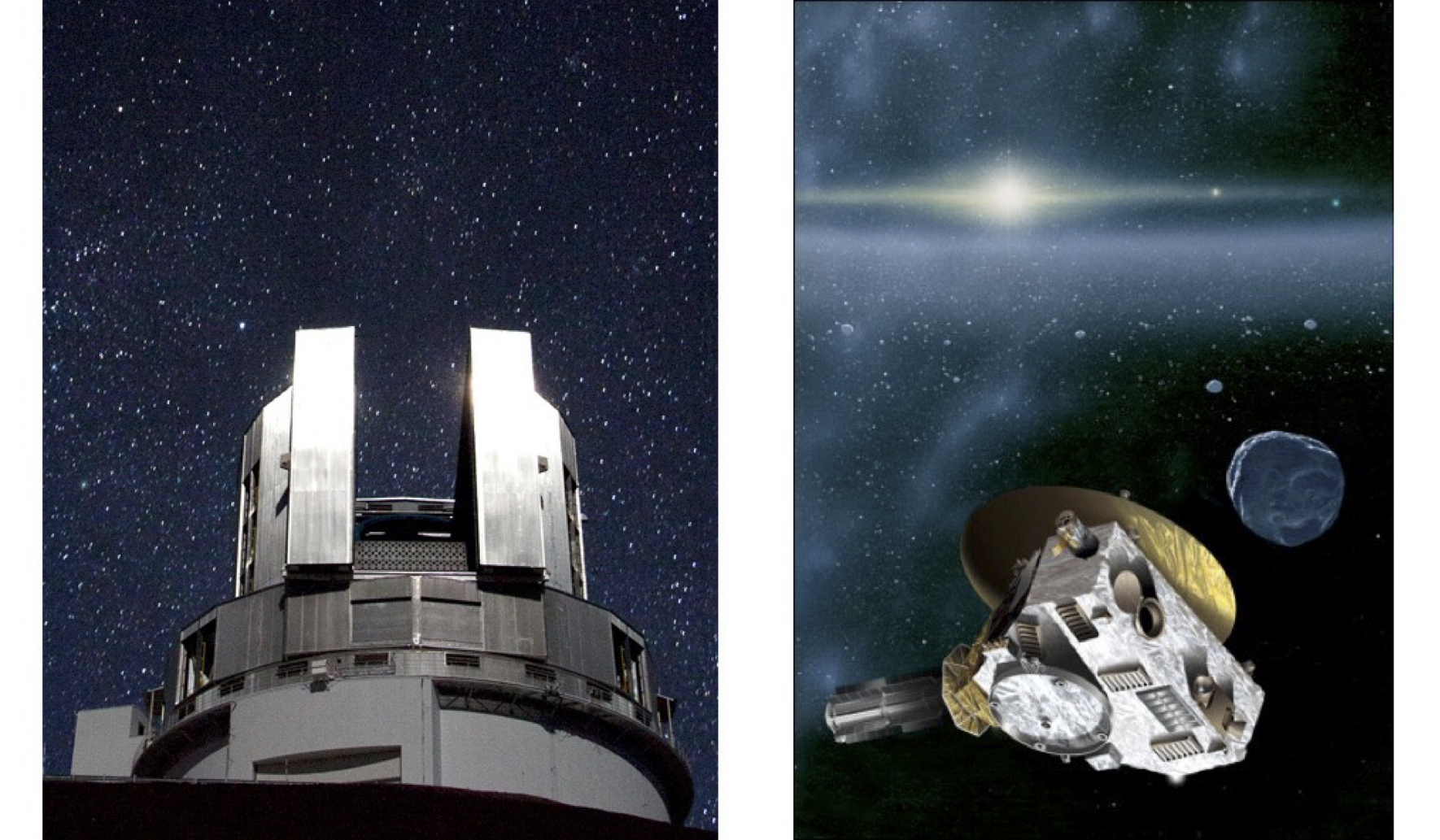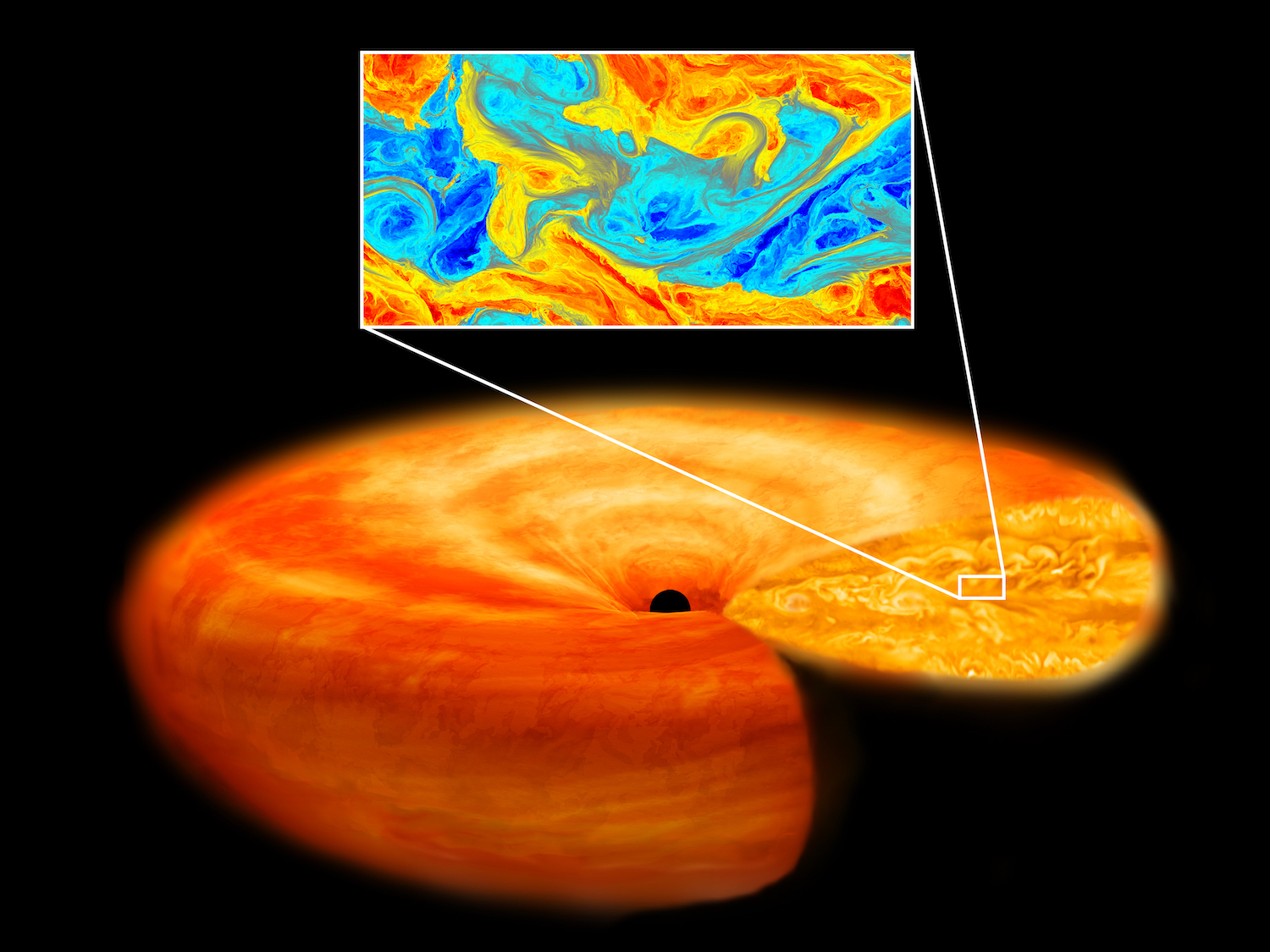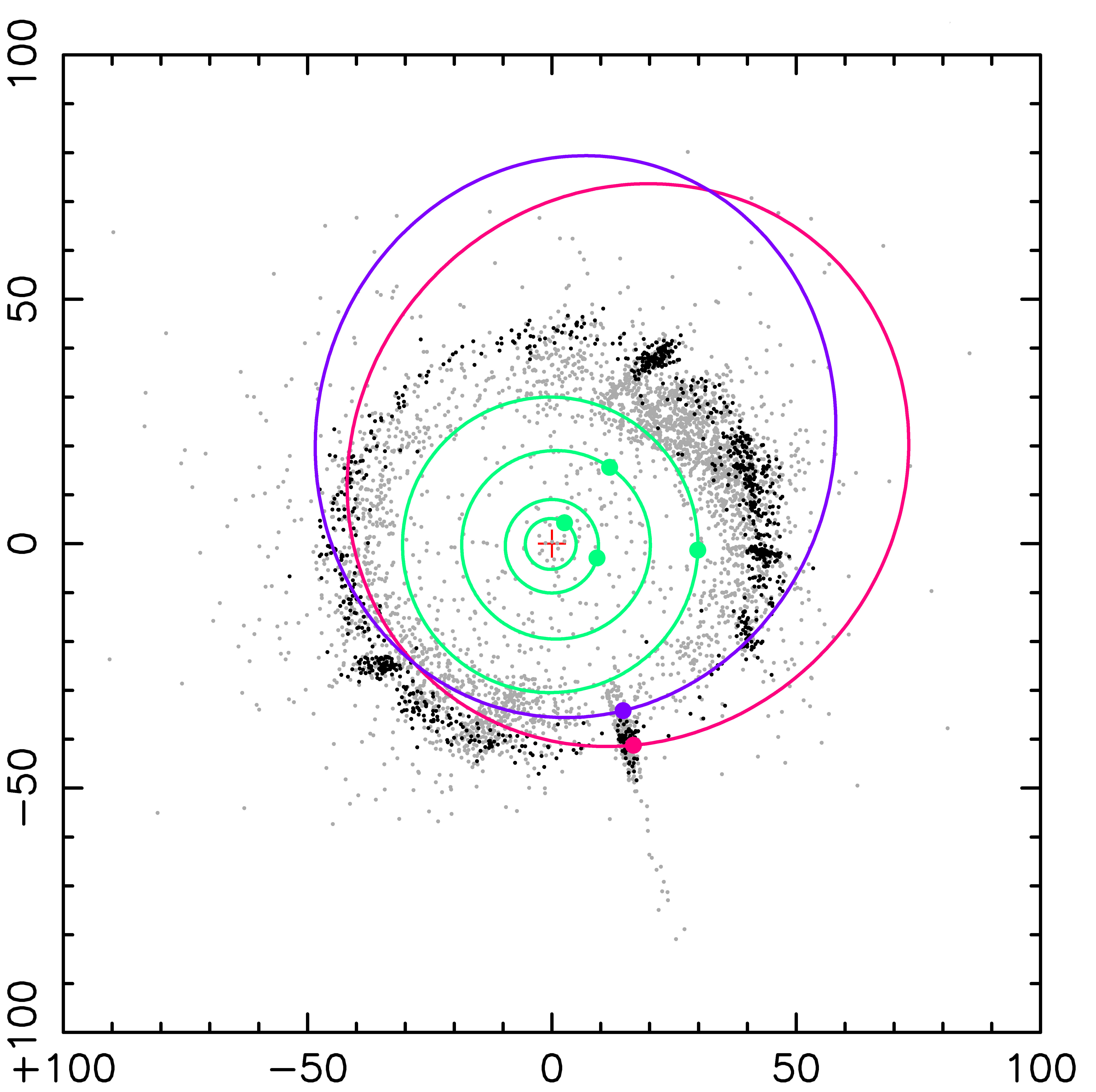The massive explosive phenomena that are solar flares are caused by the accumulation of the twisting of the solar magnetic field (magnetic helicity), but it has previously been unclear what controls this twisting. Indeed, it was presumed that bundles of twist-free magnetic flux in the solar interior would not produce a solar flare.
The interior of the Sun remains invisible to telescopes, but activity can be probed using supercomputer simulations. The research team consisting of Assoc. Prof. Toriumi Shin (JAXA), Prof. Hotta Hideyuki, and Prof. Kusano Kanya (Nagoya University) used this technique to discover that thermal convection in the solar interior has a much greater impact than previously thought on the process that provides the magnetic helicity. The team performed large-scale numerical simulations using the supercomputers “Fugaku” (RIKEN) and “ATERUI II” (National Astronomical Observatory of Japan) to reproduce the emergence of bundles of magnetic flux (magnetic flux tubes) from the deep solar interior and their formation of sunspots. By artificially changing the strength of the twist of the flux tubes, the team investigated the differences in the process of injecting magnetic helicity into the solar corona as the magnetic flux emerges and produces sunspots.
The results of this revealed that even for the case with no magnetic twist, the sunspots rotated because the surrounding convection spins the magnetic flux, and magnetic helicity was injected into the solar corona. The amount of helicity supplied by the thermal convection reached a level that could cause lower-level solar flares. The results of this study indicate the possibility that not only the twist of the flux tubes but also the effect of thermal convection in spinning the magnetic flux may play a critical role in providing magnetic helicity and storing the energy required for solar flares, which is an achievement that updates the previous understanding. The results were published from Scientific Reports, a Nature portfolio journal.
 The international multi-instrument Event Horizon Telescope Collaboration (EHT) reveals new observations of a spectacular gamma-ray flare from the powerful relativistic jet emanating from the center of the M87 galaxy at multiple wavelengths, potentially leading to a better understanding of how and where particles are accelerated in these kinds of jets.
The international multi-instrument Event Horizon Telescope Collaboration (EHT) reveals new observations of a spectacular gamma-ray flare from the powerful relativistic jet emanating from the center of the M87 galaxy at multiple wavelengths, potentially leading to a better understanding of how and where particles are accelerated in these kinds of jets. 
 Researchers at University of Tsukuba conducted innovative simulations of spinning black holes grounded in general relativity, which clarified that the ultraluminous accretion disk (i.e., gaseous spiral surrounding a black hole) exhibits a precessional motion driven by the black hole's spin. This finding underscores the potential of this spin to be the primary driver of the periodic fluctuations in luminosity observed within these ultraluminous accretion disks. (October 17, 2024)
Researchers at University of Tsukuba conducted innovative simulations of spinning black holes grounded in general relativity, which clarified that the ultraluminous accretion disk (i.e., gaseous spiral surrounding a black hole) exhibits a precessional motion driven by the black hole's spin. This finding underscores the potential of this spin to be the primary driver of the periodic fluctuations in luminosity observed within these ultraluminous accretion disks. (October 17, 2024) Survey observations using the Subaru Telescope's ultra-widefield prime focus camera have revealed that there may be a population of small bodies further out in the Kuiper Belt waiting to be discovered. The results, which are important for understanding the formation of the Solar System, were obtained through an international collaboration between the Subaru Telescope and the New Horizons spacecraft traveling through the outer Solar System. These results will be published in two scientific papers in the Planetary Science Journal, Buie et al. 2024 "The New Horizons Extended Mission Target: Arrokoth Search and Discovery" and Fraser et al. 2024 "Candidate Distant Trans-Neptunian Objects Detected by the New Horizons Subaru TNO Survey". Associate Professor Takashi Ito of the Center for Computational Astrophysics (CfCA) also contributed to this research. (September 5, 2024)
Survey observations using the Subaru Telescope's ultra-widefield prime focus camera have revealed that there may be a population of small bodies further out in the Kuiper Belt waiting to be discovered. The results, which are important for understanding the formation of the Solar System, were obtained through an international collaboration between the Subaru Telescope and the New Horizons spacecraft traveling through the outer Solar System. These results will be published in two scientific papers in the Planetary Science Journal, Buie et al. 2024 "The New Horizons Extended Mission Target: Arrokoth Search and Discovery" and Fraser et al. 2024 "Candidate Distant Trans-Neptunian Objects Detected by the New Horizons Subaru TNO Survey". Associate Professor Takashi Ito of the Center for Computational Astrophysics (CfCA) also contributed to this research. (September 5, 2024) Researchers at Tohoku University and Utsunomiya University have made a breakthrough in understanding the complex nature of turbulence in structures called “accretion disks” surrounding black holes, using state-of-the-art supercomputers such as RIKEN's "Fugaku" and NAOJ's "ATERUI II" to conduct the highest-resolution simulations to date. An accretion disk, as the name implies, is a disk-shaped gas that spirals inwards towards a central black hole. The study was published in Science Advances on August 28, 2024.
Researchers at Tohoku University and Utsunomiya University have made a breakthrough in understanding the complex nature of turbulence in structures called “accretion disks” surrounding black holes, using state-of-the-art supercomputers such as RIKEN's "Fugaku" and NAOJ's "ATERUI II" to conduct the highest-resolution simulations to date. An accretion disk, as the name implies, is a disk-shaped gas that spirals inwards towards a central black hole. The study was published in Science Advances on August 28, 2024. The Subaru Telescope's wide and deep imaging observations are contributing information to the New Horizons spacecraft as it moves through the outer Solar System. By applying a unique analysis method to images of Kuiper Belt objects taken by the Subaru Telescope's ultra-wide-field camera, objects that have the potential to extend the Kuiper Belt region have been discovered. The results of this research were published in Publications of the Astronomical Society of Japan on May 29, 2024 (Yoshida et al., "A deep analysis for New Horizons' KBO search images"). Associate Professor Takashi Ito of the Center for Computational Astrophysics (CfCA) contributed to this research. (June 26, 2024)
The Subaru Telescope's wide and deep imaging observations are contributing information to the New Horizons spacecraft as it moves through the outer Solar System. By applying a unique analysis method to images of Kuiper Belt objects taken by the Subaru Telescope's ultra-wide-field camera, objects that have the potential to extend the Kuiper Belt region have been discovered. The results of this research were published in Publications of the Astronomical Society of Japan on May 29, 2024 (Yoshida et al., "A deep analysis for New Horizons' KBO search images"). Associate Professor Takashi Ito of the Center for Computational Astrophysics (CfCA) contributed to this research. (June 26, 2024) Supernovae, exploding stars, play a critical role in the formation and evolution of galaxies. However, key aspects of them are notoriously difficult to simulate accurately in reasonably short amounts of time. For the first time, a team of researchers, including those from The University of Tokyo, apply deep learning to the problem of supernova simulation. Their approach can speed up the simulation of supernovae, and therefore of galaxy formation and evolution as well. These simulations include the evolution of the chemistry which led to life.
Supernovae, exploding stars, play a critical role in the formation and evolution of galaxies. However, key aspects of them are notoriously difficult to simulate accurately in reasonably short amounts of time. For the first time, a team of researchers, including those from The University of Tokyo, apply deep learning to the problem of supernova simulation. Their approach can speed up the simulation of supernovae, and therefore of galaxy formation and evolution as well. These simulations include the evolution of the chemistry which led to life.